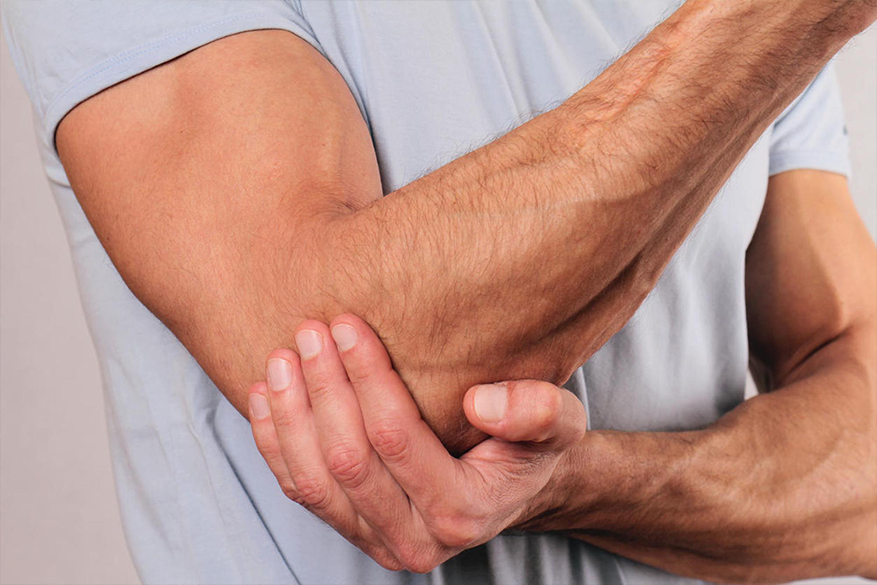Tennis Elbow
- Home
- Tennis Elbow

Shockwave Therapy Treatment of Tennis Elbow in Tunbridge Wells
Tennis elbow, also known as “lateral epicondylitis”, is believed to affect around one in three people at any time, most often between the ages of 40 and 60. You don’t have to be a tennis player to develop tennis elbow, as this condition is due to repetitive movement, which commonly affects people in their dominant arm however it can also occur in the non-dominant arm or both arms.
Repetitive elbow movement and strain can lead to discomfort and pain that is difficult to manage alone. By making your first appointment with the team here at Tunbridge Wells, you’ll be taking the first step to recovery from your condition.
When you arrive for your initial appointment you’ll be welcomed into our clinic and invited to have an informal discussion with a member of our expert team, such as Orit Edwards who has many years of experience in all areas of chiropractic care. This will help us understand more about your condition and overall health. You don’t need to bring anything specific, just be sure to dress comfortably and you may want to bring along any past test or X-ray results you’ve had.
During your first appointment, we’ll also complete a neurological and orthopaedic examination to help us determine the best course of treatment for your symptoms. Chiropractic care, ice, acupuncture and shockwave therapy are all potential treatments for tennis elbow, and we can also advise you on ways to tackle your symptoms at home in between your first and follow-up appointment.
What are the symptoms of tennis elbow?
- Usually the pain slowly increasing around the outside of the elbow.
- Pain is worse when shaking hands or squeezing objects and also by stabilising or moving the wrist with force. Examples include lifting, using tools, opening jars, or even handling simple utensils such as a toothbrush or knife and fork.
How is tennis elbow diagnosed?
It is usually diagnosed by the description of pain you provide to your chiropractor and certain findings from a physical examination.
Tennis elbow usually is successfully treated by medical means and only rarely requires surgery. The type of treatment recommended for tennis elbow will depend on several factors including age, type of other medications being taken, overall health, medical history and severity of pain. The goals of treatment are to reduce pain or inflammation, promote healing and decrease stress and abuse of the injured elbow, and allow full use of the arm.
What is the treatment for tennis elbow?
- Icing the elbow to reduce pain and inflammation: Holding a cold compress, such as a bag of frozen peas wrapped in a towel, against your elbow for a few minutes several times a day can help ease the pain.
- Rest: stop doing activities that strain affected muscles and tendons. If the pain is work related you may need to talk to your employer about avoiding or changing the activities that aggravate your arm pain and make it worse.
- Using an elbow strap to protect the injured tendon from further strain.
- Taking painkillers such as paracetamol or nonsteroidal anti-inflammatory drugs (NSAIDs) such as ibuprofen to help with pain and swelling. However, NASIDs can cause side effects such as stomach irritation so you should only use them for a short course, guided by your GP or pharmacist. Topical NSAIDs may also be recommended.
- Chiropractic treatment: your Chiropractor will use a variety of methods to restore movement to the injured part of the body. He or She may use manual therapy techniques, such as massage and manipulation, to relieve pain and stiffness, and encourage blood flow to your arm. They will also show you exercises to keep your arm mobile, reduce stiffness, increase flexibility and strengthen your forearm muscles.
- Steroid injections to temporarily ease some of the swelling and pain around the joint. However, there is limited clinical evidence to support their use as an effective treatment for tennis elbow.
- Shock wave therapy to help promote movement and relieve pain. The National Institute for Health and Care Excellence (NICE) states that shock wave therapy is safe, although it can cause minor side effects, including bruising and reddening of skin in the area being treated. Research shows that shock wave therapy can help improve the pain of tennis elbow in some cases. However, it may not work in all cases, and further research is needed.
- Acupuncture may also help to relieve the pain.
- Surgery: if you have a severe case of tennis elbow that doesn’t respond to treatment within two to four months, you may need surgery. With surgery, the damaged part of the tendon will be removed to relieve the painful symptoms.
What We Treat
Clinic Address
Vale Health Clinic, 31-33 Vale Rd, Royal Tunbridge Wells, Kent ,TN1 1BS
